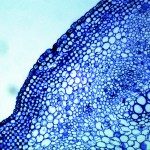Link to Pubmed [PMID] – 17519220
Hum. Mol. Genet. 2007 Jul;16(14):1682-98
Autism is a heterogeneous condition that is likely to result from the combined effects of multiple genetic factors interacting with environmental factors. Given its complexity, the study of autism associated with Mendelian single gene disorders or known chromosomal etiologies provides an important perspective. We used microarray analysis to compare the mRNA expression profile in lymphoblastoid cells from males with autism due to a fragile X mutation (FMR1-FM), or a 15q11-q13 duplication (dup(15q)), and non-autistic controls. Gene expression profiles clearly distinguished autism from controls and separated individuals with autism based on their genetic etiology. We identified 68 genes that were dysregulated in common between autism with FMR1-FM and dup(15q). We also identified a potential molecular link between FMR1-FM and dup(15q), the cytoplasmic FMR1 interacting protein 1 (CYFIP1), which was up-regulated in dup(15q) patients. We were able to confirm this link in vitro by showing common regulation of two other dysregulated genes, JAKMIP1 and GPR155, downstream of FMR1 or CYFIP1. We also confirmed the reduction of the Jakmip1 protein in Fmr1 knock-out mice, demonstrating in vivo relevance. Finally, we showed independent confirmation of roles for JAKMIP1 and GPR155 in autism spectrum disorders (ASDs) by showing their differential expression in male sib pairs discordant for idiopathic ASD. These results provide evidence that blood derived lymphoblastoid cells gene expression is likely to be useful for identifying etiological subsets of autism and exploring its pathophysiology.

